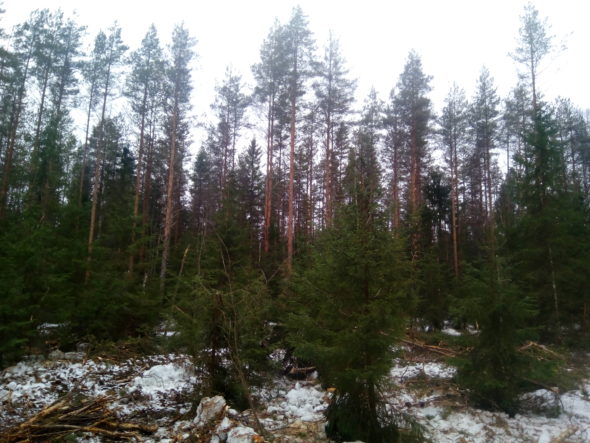Pasi Ovaska and his wife Ritva own two forest estates, one in Mäntsälä, Southern Finland and one in Pielavesi, in Central Finland. The Pielavesi estate is divided into the Kaisla and Katajamäki estates that the pair have been nurturing for the past three years. “The tree stands are uneven aged and diverse; below a fully stocked Scots pine forest a spruce undergrowth is maturing and it will be the next forest generation.” Pasi explains. A fourth of the estate area consists of nutrient-rich peat soil.
Continuous cover forestry
The Pielavesi peatland forests are managed using the continuous cover method, by which only the mature tree individuals are harvested, without traditional clear-cut. “The substrate has to be moist and let in enough light to establish a new plant forest. Consequently, you cannot use the continuous cover method everywhere, but you can improve the conditions for a new plant forest by letting in more light through thinning”, tells Pasi.
Benefits and challenges with the method
On the peatland sites, the continuous cover forestry was the obvious method for Pasi, who made the decision on economic grounds. “There would be no use to choose another method, because the young spruce undergrowth grows naturally below the old pine stand. It would be senseless to pull up the natural plant forest and use time and money to replace it with seedlings planted by hand”, Pasi laughs. Apart from the cost benefits, the continuous cover forestry mitigates climate change and maintains the recreational value of the forest.
Harvest may be hampered by the undergrowth, as care has to be taken not to damage the young tree stand. “To protect the tree roots, it would be a good thing if the ground were frozen during harvest. Occasionally, a thick snow cover may keep the ground unfrozen and soft, and thus prevent harvesting,” Pasi observs.
Future improvement objectives
Despite its challenges continuous cover forestry is often a profitable decision on suitable sites. Pasi also wishes that the local forestry society would look into the method more closely: “multi-storey forestry is clearly the most well-trodden growing method for forest professionals and consequently the one most eagerly recommended. To speed up the inclusion of continuous cover forestry as a noteworthy alternative we would need more guidance and information about it”.

